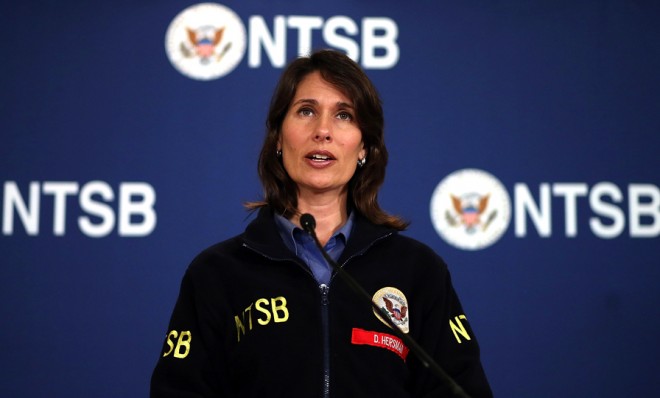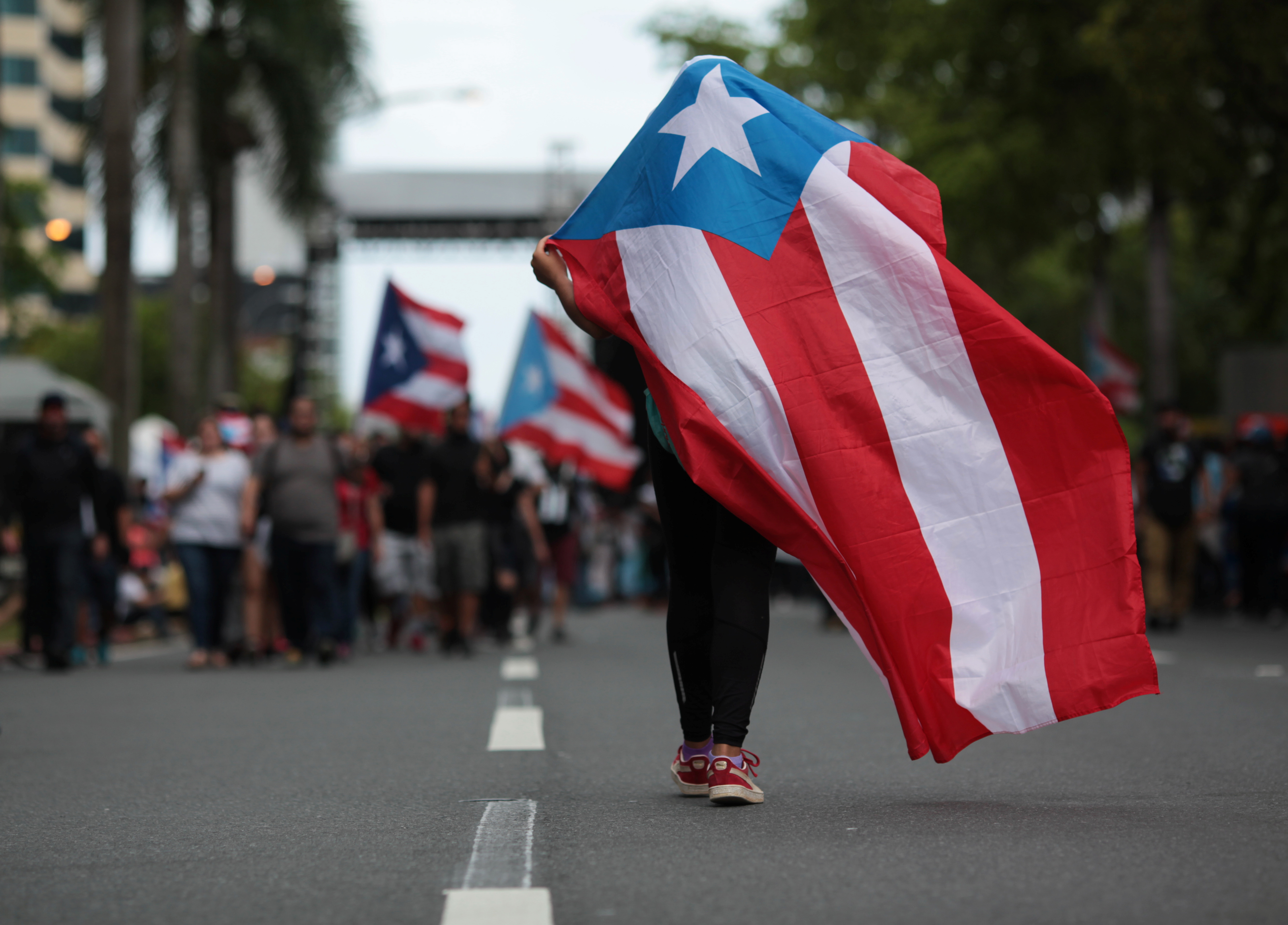A guide to crash speak


The more complicated planes get, the harder it is to fly them. There are more ways for pilots both to mess up and to compensate for their mess-ups, and there are more dials, flashing lights, and doodads for them to keep watch on. That said, there are a few basic principles of flying that apply to the Asiana crash, principles that might be obscured by some of the aviation lingo that's being thrown around. I'm not a pilot, and so I write only as an interested observer who is, himself, trying to understand what happened. My own definitions may not be precise enough for the FAA or Cockpit Confidential, but I hope they help explain some of the concepts.
First, a few words: Associate pitch with moving up or down, the "stick" with pitch, yaw with left or right horizontal movement, rudders with yaw, and thrust with force and speed.
How important was it that the glideslope wasn't working?
The Week
Escape your echo chamber. Get the facts behind the news, plus analysis from multiple perspectives.

Sign up for The Week's Free Newsletters
From our morning news briefing to a weekly Good News Newsletter, get the best of The Week delivered directly to your inbox.
From our morning news briefing to a weekly Good News Newsletter, get the best of The Week delivered directly to your inbox.
It's not an easy question. Potentially, very important — if the pilot really, really preferred to use this method. But practically, probably not. A glideslope refers to a beam of energy that's part of the Instrument Landing System and keeps a plane on a vertical descent line. When cleared by the tower for an ILS approach to a runway, you tune your plane to the frequency of the glideslope emission; you adjust your speed, using the throttle, and pitch, using the stick, to keep the glideslope line as close to the center-line of an indicator display in the cockpit as you can. Another beam provides lateral guidance, so you're using your rudder pedals to slightly adjust the yaw to keep the line as close to the horizontal center-line in the same indicator display. If the lines stay tight, you'll land precisely in the touchdown zone of the runway, which is usually about 1,000 feet in from the threshold, or the start, of the runway.
That's how planes land in bad weather. For most ILS approaches, though, the pilot has to make a decision at some point close to the ground. Regardless of what his instruments are showing, can she see the touchdown zone, enough of the runway, and the runway lights? This "threshold" changes depending on the runway, but it's usually between 300 and 500 feet, which will give the pilot enough time, if she doesn't see anything because it's too rainy, snowy, foggy or cloudy, to declare a "missed approach," throttle up, retract most of the drag-inducing flaps, and then retract the runway gear, and pitch up.
So how did the pilots know how to stay on the right path?
On a clear day with no visual distortions, there are other ways for a pilot to know if he's flying the correct approach path. Runway 28L had a functioning PAPI, or Precision Approach Path Indicator. The PAPI is a series of lights set to one side of the runway threshold. It doesn't matter precisely where. The angle at which the pilot's eyes catch the PAPI is key: if the pilot is on the correct glidepath, he will see two yellow lights next to two red lights. If the pilot is coming in high, he'll see three yellow lights and one red light. If he's coming in too low, he'll see three red lights next to one yellow light. If you're coming in too low, it means that you need to increase the ground speed of the plane relative to the rate of descent, so you push the throttle forward a bit, or perhaps adjust the pitch. If you're coming in too high, you ease back on the throttle or change the angle of the plane relative to the descent, pitching up a little. In any event, when you see the two-two configuration, you're good.
A free daily email with the biggest news stories of the day – and the best features from TheWeek.com
Is that the only way for a pilot to tell if she's going to land at the right spot?
No. Look at the landing threshold. It should be, relative to the rest of the stuff in your band of vision, at the same place it was when you first saw it. It'll get bigger and bigger, and bigger and bigger, but it won't move. Is that's the case, your ground speed is sufficient to land in the touchdown zone properly. So there were at least two cues — one electronic, and one visual, that the pilots were relying on.
What does it mean that the "speed" was too slow? How would they know what the right speed was?
The way you get a plane in the air is to generate enough thrust to overcome its weight, so that the thrust plus the weight of air itself is higher than the weight of the plane. The way you get a plane to land is to reverse the process that generates the thrust. This does not mean that you lower the power and point the nose toward the ground. It's kind of complex, because you want to land at a specific spot, like, say, on a runway, where you can burn off all the excessive energy that the plane has in a way that doesn't kill anyone or wreck the thing. The way to do this properly is to calculate a descent rate from a particular spot close to the runway threshold. The descent rate depends upon the weight of the airplane, because it represents the safest, slowest possible speed that the plane can lose its thrust, stay on an angle, and maintain control. Pilots will know that they'll need to land with a specific approach speed. Air Traffic Control will give them time to reduce their speed slowly; obviously, a plane can't fly at 300 knots until two miles out and then suddenly hope to slow down to between 150 and 160 knots right at the runway threshold without something going wrong. Usually, planes step down their speeds and altitudes gently, and are given several miles to set up their approaches — both the speed (the groundspeed, not the airspeed) and the angle (the glideslope). Generally, a plane's approach speed is a relative constant. The airframe accounts for a set weight, but variations in fuel aboard, the passenger count, the tailwinds on the ground and even the temperature can push the number higher or lower. The pilots and their dispatches can calculate the figure very quickly if conditions rapidly change. But they can't and never do ballpark the figure.
So how do pilots stay at the exact speed?
They adjust the thrust and the pitch of their aircraft. Generally, pilots will turn on the "autothrottle," and will use one of their several autopilots to set the speed. The plane, in theory, will then automatically adjust the throttle to make sure the speed is constant on the approach. Of course, the autopilots can't violate the laws of physics. Pilots themselves have to make sure the plane is within a certain set of physical parameters in order for the autopilot to work properly. Some pilots like to manually adjust the throttle to maintain the speed; some don't. And right before landing, the autopilot has to be disengaged because the plane is supposed to touch down and then slow down, something it can't do if the plane itself wants to keep the speed constant. (Some autopilots automatically disengage at a certain height). For all the talk of how "planes land themselves," pilots are the ones who decide when to disengage the autopilot and when to retard the throttle to idle, and how and when to begin the "flare" — which is that nose-up maneuver that both increases drag, slows down the plane, and allows the aircraft to touch down on its rear wheels as gently as possible. (Some planes can land themselves; these "category 3 ILS approaches" are still kind of rare, because airports have to be certified for them, pilots have to be trained extensively for them, and a lot of people still can't get over the idea of letting a plane decide when to cut off the autothrottle and automatically pitch up.)
What happens when the autothrottle is disengaged and the pilot must increase speed before the plane is over the runway?
Once the autothrottles have been disengaged, a pilot efficiently increases speed during landing by
(a) keeping the pitch constant and adding more thrust to the engines,
(b) and then very slowly adjusting the pitch down as the added thrust kicks in to make sure the plane's altitude aligns with the visual cues or ILS glidescope as necessary.
Problem is, if you're trying to do this 10 seconds from touchdown, the plane is usually not going to respond as quickly as you need it to.
If the pilot lowers the nose first, the altitude will drop before the speed increases, so pilots are instructed, generally, to not adjust the pitch of their aircraft when they're trying to make sure they're on a proper path to land until the plane has begun to speed up. The last thing these Asiana pilots needed to do was to go lower faster.
By the way, human instincts would have you pull back on the stick as soon as you can, because up is up, but pitching up quickly during landing will not increase the altitude quickly enough and will decrease speed too quickly. Pitch up, speed down. Pitch down, speed up. And when you're landing or taking off, the relative effects of these actions will differ too.
What's this about a "go-around?" Why didn't the pilots do this "go-around" thing if whatever they were doing wasn't right?
The latter question is hard to answer; perhaps the pilots genuinely did not notice they were in trouble until it was too late. For the most part, though, if a plane is more than 15 seconds from touching down, it can safely and seamlessly execute a go-around maneuver. The flaps and slats — the thingies that extend from the wings during takeoff and landing — are retracted to a takeoff posture; the throttle is pushed up; then the plane pitches up slightly; once positive climb (i.e., it's going up) has been established, then the pilots will retract the landing gear. Every runway comes with its own "missed approach fix," which is where a plane knows to go automatically if it can't stick the landing. Before landing, a pilot will input the height of that fix, usually around 3,000 feet, into an autopilot computer. It won't be activated, though. (Each plane you fly has at least two these days, two separate autopilots). The pilot flying the plane relies on his or her co-pilot to look at the electronic landing cues and instruments to make sure that the plane is on track for a landing. He or she is ready to perform the final landing maneuvers (see below), or switch gears and do a "TO/GA." What a cool button this is. It basically tells the plane to ignore everything, including the autopilots, and increase the throttle as quickly as possible. Once the engines have spooled up, a process that can take anywhere between eight and 10 seconds, then the pilot not flying might activate the autopilot with the missed-approach height setting.
Marc Ambinder is TheWeek.com's editor-at-large. He is the author, with D.B. Grady, of The Command and Deep State: Inside the Government Secrecy Industry. Marc is also a contributing editor for The Atlantic and GQ. Formerly, he served as White House correspondent for National Journal, chief political consultant for CBS News, and politics editor at The Atlantic. Marc is a 2001 graduate of Harvard. He is married to Michael Park, a corporate strategy consultant, and lives in Los Angeles.
-
 Can Mike Johnson keep his job?
Can Mike Johnson keep his job?Today's Big Question GOP women come after the House leader
-
 A postapocalyptic trip to Sin City, a peek inside Taylor Swift’s “Eras” tour, and an explicit hockey romance in December TV
A postapocalyptic trip to Sin City, a peek inside Taylor Swift’s “Eras” tour, and an explicit hockey romance in December TVthe week recommends This month’s new television releases include ‘Fallout,’ ‘Taylor Swift: The End Of An Era’ and ‘Heated Rivalry’
-
 ‘These accounts clearly are designed as a capitalist alternative’
‘These accounts clearly are designed as a capitalist alternative’Instant Opinion Opinion, comment and editorials of the day
-
 Why Puerto Rico is starving
Why Puerto Rico is starvingThe Explainer Thanks to poor policy design, congressional dithering, and a hostile White House, hundreds of thousands of the most vulnerable Puerto Ricans are about to go hungry
-
 Why on Earth does the Olympics still refer to hundreds of athletes as 'ladies'?
Why on Earth does the Olympics still refer to hundreds of athletes as 'ladies'?The Explainer Stop it. Just stop.
-
 How to ride out the apocalypse in a big city
How to ride out the apocalypse in a big cityThe Explainer So you live in a city and don't want to die a fiery death ...
-
 Puerto Rico, lost in limbo
Puerto Rico, lost in limboThe Explainer Puerto Ricans are Americans, but have a vague legal status that will impair the island's recovery
-
 American barbarism
American barbarismThe Explainer What the Las Vegas massacre reveals about the veneer of our civilization
-
 Welfare's customer service problem
Welfare's customer service problemThe Explainer Its intentionally mean bureaucracy is crushing poor Americans
-
 Nothing about 'blood and soil' is American
Nothing about 'blood and soil' is AmericanThe Explainer Here's what the vile neo-Nazi slogan really means
-
 Don't let cell phones ruin America's national parks
Don't let cell phones ruin America's national parksThe Explainer As John Muir wrote, "Only by going alone in silence ... can one truly get into the heart of the wilderness"
